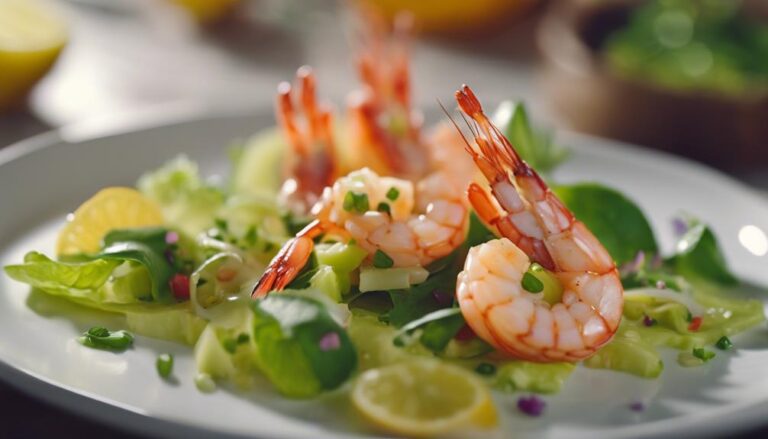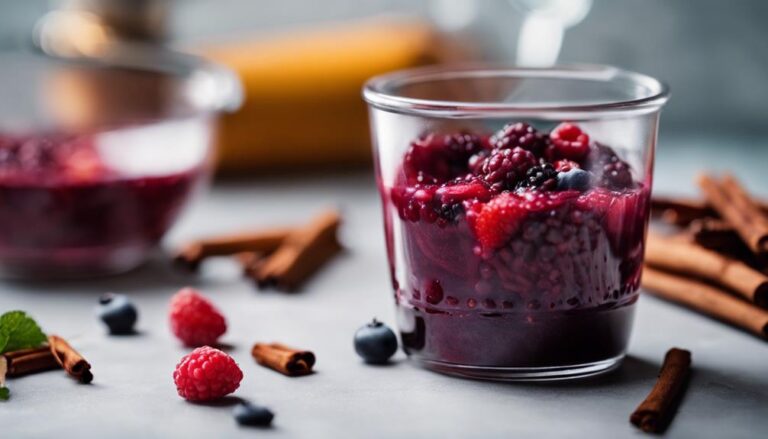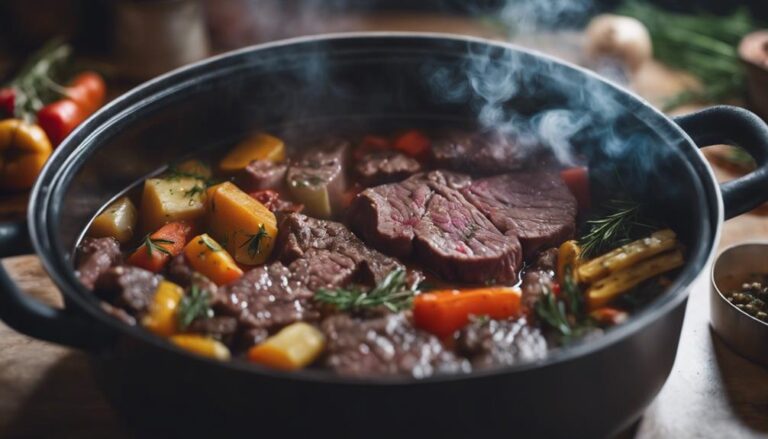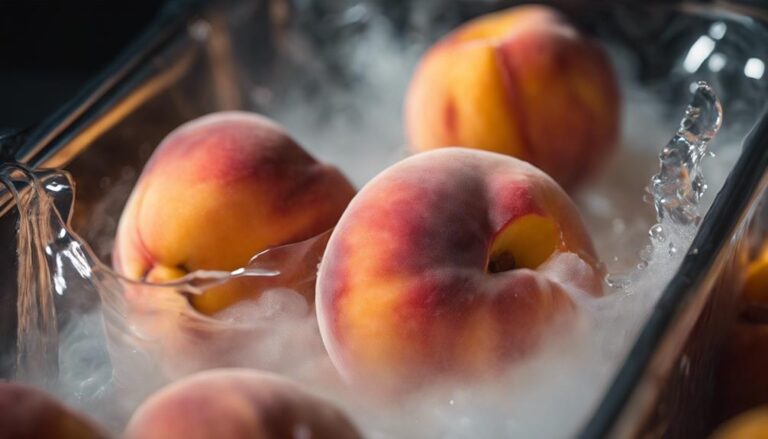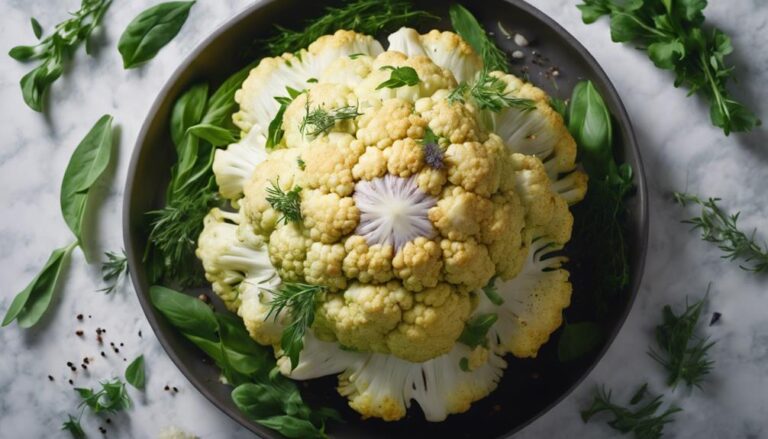Sous Vide Grilled Lobster Tails With Lemon Butter
Indulge in tender sous vide-cooked lobster tails with zesty lemon butter and a grilled finish. Elevate your culinary experience to new heights of flavor and sophistication.Ensure precision with sous vide cooking for perfectly cooked lobster, maintaining natural juiciness. The lemon butter sauce adds elegance and zest, complementing the grilled lobster tails for an exquisite dining experience.
What You Will Learn Here
- Sous vide lobster tails for precise cooking before grilling
- Infuse lemon butter with herbs for added flavor
- Achieve a perfect sear for caramelized crust
- Maintain tenderness and juiciness through sous vide process
- Elevate dish with a blend of precision and zesty lemon butter
Origin of Lobster Cooking
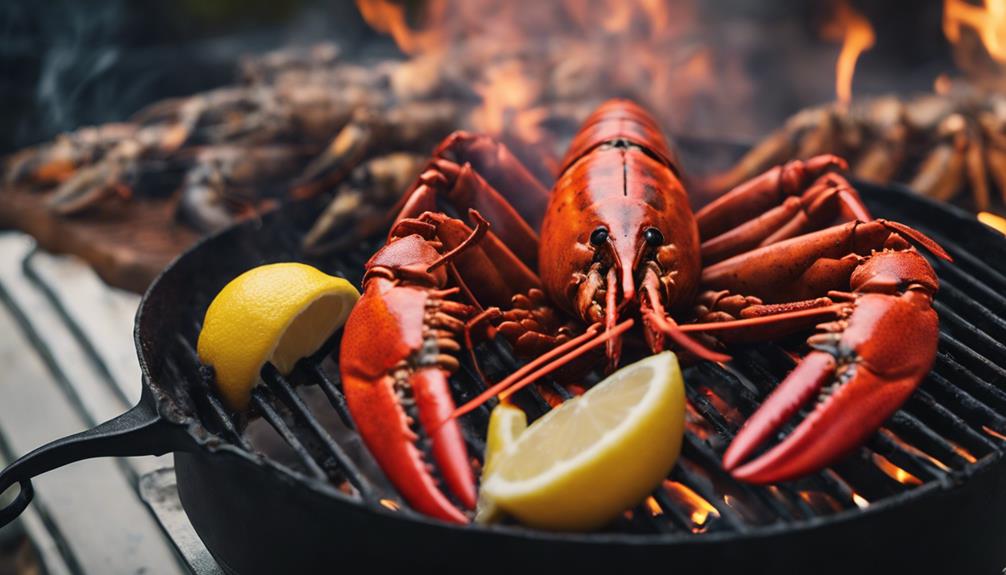
Explore the rich history and diverse techniques of lobster cooking, from traditional methods to modern innovations.
Discover how lobster culinary traditions have evolved over time, shaping the way this prized seafood is prepared and enjoyed today.
Uncover the secrets behind historical lobster preparation and the cultural significance of this revered ingredient in various cuisines.
Lobster Cooking Techniques
Throughout history, the evolution of lobster cooking techniques can be traced back to ancient civilizations like the Greeks and Romans. Today, various methods like sous vide cooking and grilling have become popular choices for preparing lobster. Experimenting with different cooking techniques allows for a diverse range of textures and flavors to enhance the dining experience when enjoying lobster tails. Here is a breakdown of some common lobster cooking techniques:
| Cooking Method | Description | Advantages |
|---|---|---|
| Boiling | Traditional method involving boiling lobster in water | Easy and quick |
| Sous Vide | Involves vacuum-sealing lobster for precise cooking | Consistent and tender results |
| Grilling | Cooking lobster over an open flame for a smoky flavor | Enhances natural sweetness of lobster |
Historical Lobster Preparation
The historical roots of lobster preparation, tracing back to ancient times, reveal a fascinating evolution of culinary practices surrounding this prized crustacean. In the past, lobsters were plentiful, being considered inexpensive fare even served to prisoners. Traditional cooking methods involved boiling lobsters alive, a practice that dates back to the 19th century. Boiling live lobsters was believed to maintain the meat's flavor and texture, though it raises ethical concerns today.
However, the advent of modern cooking techniques like sous vide has provided a more humane approach to lobster preparation. Sous vide allows for precise cooking without the need to boil the lobsters alive, showcasing a shift towards more ethical and controlled cooking methods for this delectable seafood.
Lobster Culinary Traditions
Incorporating age-old culinary traditions, lobster cooking techniques have evolved over centuries, reflecting the rich history and cultural significance of this esteemed crustacean.
From the early days of boiling or roasting lobster over open flames to the emergence of gourmet dishes like Lobster Newberg and Lobster Thermidor in the 19th century, lobster has held a special place in culinary traditions.
The advancements in transportation during the 19th century further popularized lobster, making it more accessible to a broader audience.
Today, modern cooking methods such as sous vide have revolutionized lobster preparation, enhancing its natural flavors and textures. These innovations in cooking techniques continue to showcase the versatility of lobster in gourmet cuisine, adding a touch of sophistication to this beloved seafood delicacy.
Lobster Tail Preparation Essentials
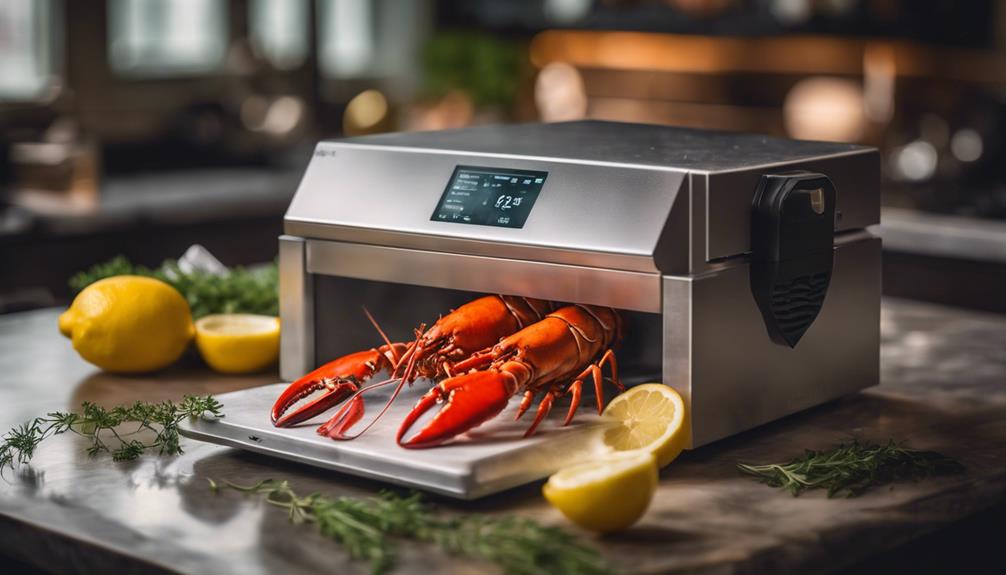
When preparing lobster tails, effortlessly remove the meat using kitchen shears without the need to blanch beforehand. This method allows for a smooth and efficient preparation process, ensuring that you can cook your lobster tails with ease and precision.
- Handle with Care: Treat the lobster tails gently to preserve their delicate texture and flavor.
- Temperature Precision: Experiment with different cooking temperatures to achieve the perfect level of doneness for your lobster tails.
- Quality Ingredients: Use cold water lobster tails for the best results in your sous vide cooking experience.
Sous Vide Lobster Tail Variations
When exploring sous vide lobster tail variations, you can experiment with different cooking temperatures such as 130°F, 135°F, or 140°F to achieve your desired level of doneness.
Enhance the flavor profile by infusing the butter with herbs like tarragon, basil, or fennel, or by adding aromatics like shallots, garlic, or lemon zest to the vacuum-sealed bag.
Elevate the dish by customizing the seasoning with spices like paprika, chili flakes, or black truffle salt for a gourmet touch.
Butter-Poached Lobster Tail Recipe
For a luxurious dining experience that guarantees tender and flavorful lobster tails, consider preparing a butter-poached lobster tail recipe using sous vide cooking techniques. This method allows for precise temperature control and ensures the lobster tails are perfectly cooked every time.
The lobster tails are cooked in a vacuum-sealed bag with butter, lemon zest, and garlic, infusing them with rich flavors. Cooking at 134°F for 1 hour results in perfectly tender and juicy lobster meat that melts in your mouth.
Serving the lobster tails with melted butter and lemon wedges adds a final touch of decadence to this gourmet dish, making it a delightful treat for any occasion.
Garlic-Infused Lobster Tail Recipe
To elevate your lobster tail culinary skills, consider exploring the garlic-infused variation of sous vide lobster tails for a delectable and aromatic dining experience. When preparing this dish, the lobster tails are vacuum-sealed with butter, lemon zest, lemon juice, and minced garlic to infuse rich flavors.
Cooking the sealed ingredients in a water bath at 134°F (56°C) for 1 hour guarantees tender and flavorful lobster tails. After cooking, serve the lobster tails with the melted butter from the bag, enhancing the dish's richness. Sous vide cooking promises perfectly cooked lobster every time, avoiding a rubbery texture.
This recipe not only offers a sophisticated way to enjoy lobster but also presents a visually appealing dish that will impress your guests.
- Indulge in the tantalizing aroma of garlic-infused lobster tails
- Experience the tender and flavorful results of sous vide cooking
- Impress your guests with a visually appealing gourmet presentation
Herb-Infused Lobster Tail Recipe
Enhance the exquisite flavor of lobster tails by infusing them with a blend of aromatic herbs, creating a gourmet culinary masterpiece.
- Elevate the taste of the lobster tails by experimenting with herbs like basil, fennel, and tarragon.
- Experience a sophisticated and gourmet way to enjoy lobster with herb-infused variations.
- Complement the natural sweetness of the lobster meat and create a harmonious blend of flavors by adding herbs to the sous vide cooking process.
Searing for Lobster Tail
When searing lobster tails, make sure your pan is hot before adding the tails to achieve a beautiful caramelized crust.
Use butter or oil to enhance the sear and create a flavorful exterior while maintaining the tenderness inside.
Searing for just 1-2 minutes per side will give your lobster tails a perfect golden brown color.
Searing for Lobster Tail: Techniques
For achieving a delectably caramelized exterior on your lobster tails post sous vide cooking, swiftly sear them in a hot skillet or on a grill to enhance both flavor and presentation. Searing the lobster tails not only adds a beautiful caramelized crust but also intensifies the taste profile.
This quick sear, lasting approximately 1-2 minutes per side, creates a visual appeal and textural contrast against the tender sous vide lobster meat. The process of searing locks in the natural juices of the lobster tails, ensuring a succulent bite with every mouthful.
Additionally, the searing imparts a subtle smoky element, elevating the dish to a new level of flavor complexity. Mastering the searing technique is key to achieving a well-rounded and visually stunning lobster dish.
Searing Lobster Tail: Best Practices
To achieve a perfectly seared lobster tail post sous vide cooking, swiftly apply high heat to a hot skillet or grill, creating a crispy exterior without compromising the tender meat within. Searing the lobster tails not only adds a delightful crispiness but also enhances their visual appeal.
The key is to sear for a short time on each side, ensuring that the meat retains its tender juiciness. By using a hot skillet or grill, you can achieve a caramelized exterior that locks in the natural flavors of the lobster tails. The Maillard reaction that occurs during searing is what brings about those complex and savory notes, making each bite a flavorful experience.
Mastering the art of searing will elevate your lobster tails to a new level of culinary delight.
Achieving Perfect Sear
Achieving the perfect sear on your sous vide grilled lobster tails requires the use of a scorching-hot grill or cast iron pan. Searing the lobster tails helps to enhance their flavor by creating a delightful caramelized crust.
Make sure your grill or pan is preheated to a very high temperature to quickly sear the lobster tails. Keep the searing time short, around 1-2 minutes per side, to prevent overcooking the delicate lobster meat.
This quick sear not only adds a beautiful color and texture to the lobster tails but also complements the sous vide cooking process perfectly. By following these steps, you can achieve a mouthwatering sear that will impress your guests.
Final Thoughts
In reflection on the culinary journey presented, the harmonious blend of sous vide precision and zesty lemon butter elevates these grilled lobster tails to a sphere of exquisite dining. Sous vide cooking guarantees that each lobster tail is perfectly cooked, maintaining its natural texture and juiciness. The addition of the lemon butter sauce not only enhances the flavor of the lobster but also adds a touch of elegance to the dish.
Frequently Asked Questions
How Long to Cook Lobster Tail in Sous Vide?
When cooking lobster tail in sous vide, it's crucial to maintain precise cooking times for best results. Longer durations lead to mushy texture, while shorter ones risk undercooking. Adjust times based on tail size for consistent outcomes.
What Temperature Should Lobster Tails Be Grilled At?
Grill your lobster tails at 350°F to 400°F for a perfect balance of sear and juiciness. High temperatures guarantee a charred exterior while keeping the meat sweet. Lock in those flavors and juices with a quick, hot grill.
What Is the Most Tender Way to Cook Lobster Tail?
When cooking lobster tails, sous vide is the most tender method. Unlike boiling or steaming, sous vide cooking maintains precise temperatures, ensuring juicy meat. Butter poaching, oven roasting, grilling, and broiling pale in comparison to the tender perfection of sous vide.
What's the Best Way to Grill Frozen Lobster Tails?
To grill frozen lobster tails, guarantee even cooking by thawing first. Preheat grill to 375-400°F. Brush with oil or butter to prevent sticking. Grill shell down 5-7 min, flip, grill 4-5 min. Baste with lemon butter. Serve hot.
Conclusion
Indulge in the exquisite flavors of sous vide grilled lobster tails with lemon butter. This culinary masterpiece elevates the classic lobster tail dish to new heights. By incorporating the precision of sous vide cooking with the rich flavors of lemon butter, you create a mouthwatering experience that's sure to impress even the most discerning palate.
Treat yourself to this luxurious dish and savor every bite of perfectly cooked lobster tail.






